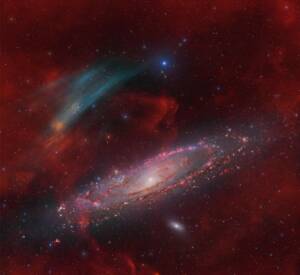
Discovery of the M31 [OIII] emission arc
Recently, a major discovery by an international team of amateur astronomers and scientists has become a huge online hit, and this new discovery is just located in one of the

Pavle Gartner is the winner of ZWO 2019 ASIWEEK #27 and has brought us many extraordinary astronomy photos. To make our ZWOers know this excellent astrophotographer better, we make this interview. Let’s all take a look now.
Q1: At first, congratulation that your nice image wins #ASIWEEK. Could you please introduce yourself to us?
Thank you! My name is Pavle Gartner, I am a husband, father to 2 little children, software engineer and amateur astronomer based in Slovenia. Recently I also founded a small business called »Deep Sky Dad«, developing astrophotography gear, mainly focusing on budget friendly autofocusers at the moment. For example Deep Sky Dad AF1 and Deep Sky Dad AF2.
I love this hobby as it combines my passion for astronomy, software and hardware engineering and 3D printing. If possible, I also intend to also make it my main income in the future.
Q2: When did you start like astronomy? And when did you have your first telescope? What’s the feeling in first observing?
I loved astronomy since I can remember. We often watched summer Perseids with my brother on clear summer nights as they entered our atmosphere and burned up, leaving only a green tinted trail. The most astounding memory I have is of comet Hale–Bopp, which was a naked sky object for amazing 18 months. I got my first telescope at 2014 – Skywatcher Skyhawk 114/1000 EQ1. Prior to that I searched the heavens with 10×50 binoculars.
When I look at the clear night sky, I always wonder who is looking back. In the last 5 years I started with astrophotography, which enables me to explore the wonders of the sky and share them with you. It has become my big passion and number one hobby. Imaging deep-sky objects are like entering a time machine – when ancient photons from the remotest corners of our Universe hit the camera sensor and reveal even the faintest details, the feeling is amazing.
Q3: When did you start DSO imaging? Can you remember your first DSO image? What’s the feeling?
I started DSO imaging in 2014. My first target was globular cluster M13, taken with Canon EOS 50D. At first I intended to do only visual astronomy. But after I shot my first DSO target the feeling was great and it enabled me to utilize my skills as a software engineer in this great hobby too. I was instantly hooked.
Q4: we know DSO imaging is hard, you need dark sky, good mount & scope, good camera to capture, stable guiding, post-processing skill, what is the most difficult part for you? what is the most important part for you?
The most difficult part is image processing, namely counter acting the light pollution, which is becoming increasingly worrying. I live in the area with bortle 6 sky and lots of cloudy nights. So I often shoot in challenging conditions. That means extracting faint details can be a tedious process.
The most important part is making the most of the good nights when they happen. That means you always have to be ready – telescope set up inside observatory, autofocusing, auto meridian flip, etc.
NGC 7331 and Stephan’s quintet
Equipment:Deep Sky Dad AF2 autofocuser,ASI1600MM,Skywatcher 200P,HEQ5 Pro
Q5: Astrophotographer usually travel long distances to the darkest places to do DSO imaging, can you tell us about your past unforgettable experience?
My most unforgettable experience was on the border between Croatia and Bosnia and Herzegovina during this summer. It was my first time on the Bortle 1 location, so the view was awe-inspiring. Milky Way was arching right above us in all its glory. No light pollution in sight. What shocked me the most was when clouds rolled in in a few hours, you couldn’t really see them. There are just these dark starless patches in the sky. It is a bit ironic that one of the most memorable things from Bortle 1 site visit are clouds J
Q6: What equipment are you use currently? can you show us some images of your setup?
I own 3 different telescopes – Skywatcher 200P newton reflector for closeup images, WO 71 Star f/4.9 for medium focal length and 50mm Canon lens for widefield photos. Main imaging camera is ASI1600MM with ZWO EFWmini 1.25” filter wheel. For autofocusing, I am using our own product, Deep Sky Dad AF1 or Deep Sky Dad AF2. To take care of Guiding, ASI120MM camera is mounted on TS Deluxe 60mm guide scope. The whole setup is mounted on the Skywatcher HEQ5 Pro mount.
Q7: What kind of telescope is your favorite? why?
I like Newtonian reflectors best, because they provide the most aperture for the money you pay. Additionally they are very versatile (you can do DSO or planetary) and can be easily collimated.
Cave nebula
Equipent:Deep Sky Dad AF2 autofocuser,ASI1600MM,Skywatcher 200P,HEQ5 Pro
Q8: When did you know about ZWO? And what’s the first ASI camera you have? can you tell us your feeling when you get your first ASI camera?
I first heard about ZWO from my friend Matej Mihelčič. He recommended me your cameras and they really are a breakthrough in astrophotography. CCD cameras in same performance range are much more expensive so these cameras are really game changing. My first DSO camera was ASI174MM.
Q9: Which ASI camera is your favorite? And why are you choose it? Do you have any user experience share to the user who wishes to buy an astro camera?
On the paper, I like the ASI294 for the OSC camera for its superior dynamic range and ASI1600MM for narrowband work. I have yet to test ASI294, so I can’t comment on the differences at the moment.
My experiences are mostly good – drivers work flawlessly and images are very noise-free. However, I did have issues with ASI1600MM disconnecting. I had to send it to you for repair via TS, which took 6 months (half of the time was because it first went to TS). So I was a little disappointed, as I missed quite a few clear nights. But all in all it’s a very solid camera. I would highly recommend the starters in astrophotography to check out your ASI294 and ASI1600MM Pro.
My advice to someone buying astro camera is this – go for CMOS cameras. Comparable CCD cameras are much more expensive. And are quite a lot of new CMOS cameras coming to the market, so there are plenty of choices. The choice depends on the region and what features you want.
LBN576
Equipment:Deep Sky Dad AF2 autofocuser,ASI1600MM,Skywatcher 200P,HEQ5 Pro
Q10: Did you know our ASIAIR? If yes, what features do you like?any new features you like to add?
I saw ASIAIR product, its really nice for lightweight dark site imaging. Basically it’s a similar product as Stellarmate, based on raspberry pi hardware but more polished and focused on your products (for example last time I checked it does not support 3rd party INDI autofocusers yet, only ZWO EAF). It’s a really good option for dark site imaging if you are a dedicated adopter of ZWO products.
Q11: What’s your impression of ZWO?
Great quality products at good price. You are doing a great job making astrophotography more accessible to the masses and I try to do the same with our business. I think if more people were into astronomy, it would make the world a better place. It’s a humbling experience as it gives you some perspective on how small we really are in the context of the universe.

Recently, a major discovery by an international team of amateur astronomers and scientists has become a huge online hit, and this new discovery is just located in one of the
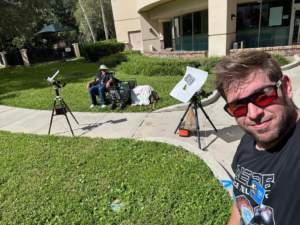
That 11-year-old boy staring at Horsehead Nebula photo would never have imagined… Decades later, he’d be capturing amazing deep-sky images from his Florida backyard! “ It was amazing to see

Hello,Sara Harvey,thanks for accepting our interview invitation. Congratulations on winning the ASIWEEK competition in week! Q1: At first, congratulation that your nice image won #ASIWEEK. Can you introduce yourself to
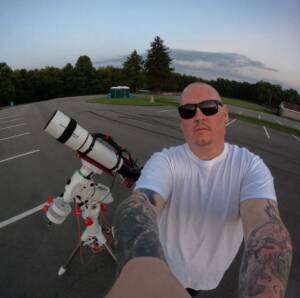
Astrophotography is more than just capturing images of the night sky—it’s a journey of discovery, patience, and creativity. For this passionate astrophotographer, what started as a chance encounter with a
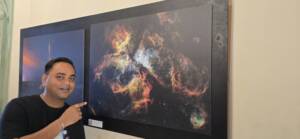
Taranjot Singh, an Indian origin Australian astrophotographer who is making waves on the international stage. Taranjot has been recognized as one of the Top 5 finalists in the prestigious Siena
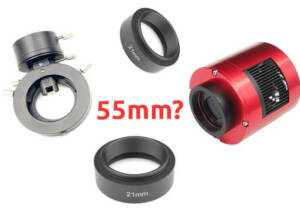
The back focal length is advised by telescope manufacturers. Since most telescopes have a 55mm back focal length, we are here to provide detailed instructions for all ASI cooled cameras.Please
2 Comments
Sean Gallagher
Pavle has some really nice well made products! I’d recommend looking at his website. As for Question 10 there on the ASIAIR, Please ZWO, add support for 3rd party autofocusers and you would have an awesome product.
ZWO.Moson
Thank you for supporting us, we will convey your feedback to our devs, and they will consider this.